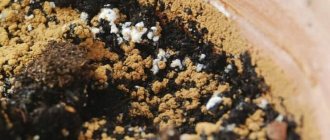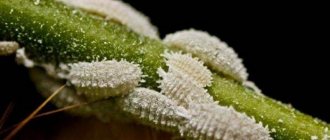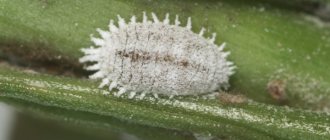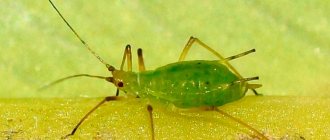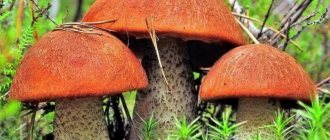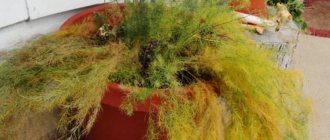Hardy, persistent and undemanding crops can surprise you just as much as indoor exotics. Some problems signal the need for minor adjustments to the care program, others indicate subtle changes in living conditions, and others require major action. Most often, when growing indoor pets, one encounters a seemingly insignificant deviation in the decorative appearance of foliage - the appearance of dry tips. Let's try to figure out why the tips of the leaves dry out and how to prevent a small problem from turning into a big hassle.
Drying of the tips of leaves does not always lead to their falling or wilting; more often than not, it does not affect even 1% of the leaf surface. But it invariably affects the attractiveness of the plant and spoils its appearance. And this phenomenon should not be ignored, even if it seems purely seasonal (most often winter). It may only take a minor correction of the conditions to combat it, but if you are inattentive and miss the real cause, the plant will suffer much more, and the fight against the problem will be long.
Raid on the ground
A white coating on the soil in a pot is a clear sign of “overfeeding” the plant. This usually happens when watering with tap water, which is highly hard. If you water the plant too much, it will not have time to absorb such a large amount of moisture. As a result, the liquid evaporates and salts accumulate on the soil.
Sometimes a white coating appears even when you use soft water. This indicates that an excessive amount of salt fertilizer is applied to the soil. When water evaporates from the soil, it draws salts to the surface of the soil, which form a white coating.
Disease Prevention
To prevent infectious diseases, you need to remove weeds and dead plant remains in a timely manner. Before planting seeds, they need to be disinfected. It is necessary to periodically treat all garden equipment with disinfectant solutions.
When planting, it is necessary to maintain a distance between seedlings of at least 10 cm. This will provide a sufficient amount of light and air circulation, which will prevent the possible development of fungi.
The soil should be fertilized regularly, strictly following the instructions on the package. Weeds must be removed in a timely manner. Plants must be planted in a new place every year.
Since each species has a tendency to a certain disease, planting it in another area of the garden will help prevent many diseases. Any plants that have to be removed due to a viral or fungal infection should be burned to prevent spread.
Drying leaf tips
Drying leaf tips is another symptom of overfertilization. However, the remaining green parts of the plant may not look wilted.
Drying tips most often appear in non-flowering species. Such indoor plants react especially negatively to “overfeeding”. If you continue to abuse fertilizers, this will lead to deviations in the growth and development of the crop.
Record on paper the frequency of fertilization. Compare it with the feeding schedule recommended by plant breeding manuals. You can also consult experienced flower growers. This will help you identify mistakes made and avoid them in the future.
Powdery mildew
Powdery mildew is a disease caused by ectoparasitic microscopic fungi; it can develop not only on the leaves, but also on the fruits of some plants, as well as on the above-ground parts of the shoots.
To identify the problem, you can conduct a small experiment - try rubbing the area that was affected by the disease. If it really is powdery mildew, small pellets appear on your fingers; they will consist of mycelium threads, and very small ones at that. Gardeners advise fighting this fungus with drugs - fungicides developed on a sulfur basis.
Folk method of combating plaque
It is also allowed to use traditional methods, and recipes can be effective:
- Recipe from a solution of potassium permanganate. Experts advise using a recipe based on a manganese solution only when the disease appears, that is, in the very initial stages. As you might guess, the recipe is based on a simple mixture of potassium permanganate with clean water, and only 1.5 grams are needed per 10 liters of liquid. If the problem affects garden plants, then they need to be treated after rain. With indoor ones, do the same after watering and do not do this for some time;
- Recipe based on mullein infusion. This option can also be used in the later stages of the disease. It all consists of mixing mullein with clean water 1:3; all this should be left for exactly three days. After the allotted time has passed, you need to strain the mixture and add more clean water, three times more than the total volume of infusion received. Treatment of plants according to this recipe should be carried out several times, and between each of these treatments there should be from one week to 10 days;
- Recipe based on copper sulfate. Pure warm water is mixed with whey in a ratio of 7:3, and only then with copper sulfate (a teaspoon per 10 liters of the resulting mixture). You can spray plants with this product every day, and you will see the result after several treatments;
- Recipe based on onion skins. An equally popular and effective recipe is a tincture made from onion peels. For 100 g of husk you will need 5 liters of clean water. You need to mix these components and bring to a boil, then remove the tincture from the stove and leave for one day.
Popular: Tips on what to do if the leaves of tomatoes begin to curl
Downy mildew may develop, but it differs significantly from the previously discussed disease, because even the spots in this case have a yellowish tint, and they appear exclusively on the leaves. The plaque appears only on the underside of the leaf, and it has a specific gray-violet hue. Downy mildew can be defeated by using copper-based products.
Mold
Another disease that can affect plant leaves is mold, and it is also caused by a fungus. The reason for this problem is the owners themselves, who allow constant excessive soil moisture. As you might guess, the problem may be caused by constant rain and excessively high air humidity.
Let us immediately mention that mold is commonly called fibrous formations that appear on the surface of leaves and look like ordinary dust. Mold develops much faster than the previously mentioned powdery mildew, so if action is not taken immediately, it can spread to the entire plant and cause it to die.
Measures should consist of the most effective actions in this case - you need to completely get rid of leaves that were in any way susceptible to mold formation. The remaining parts of the plant must be treated with antifungal agents. In this case, folk recipes will simply be ineffective, and delay in processing the leaves can lead to the complete death of the plant.
Gray rot
The disease, as its name suggests, is accompanied by the appearance of a plaque with a gray tint. Gray rot is also fungal in nature, and manifestations of the disease can be seen not only on the leaves, but also on the stems or even petioles of plants. A feature of gray rot is a fluffy coating that gradually acquires a darker shade.
With mold, it is important to act immediately, because gray rot completely destroys the plant extremely quickly. The disease is easily transmitted, for this reason, when its first signs appear, you should immediately move it away from other flowers (if, of course, we are talking about indoor plants).
Popular: Eight reasons for blackening of spathiphyllum leaves
There is no remedy yet that can combat gray rot; for this reason, when it spreads, at least half of the plant is destroyed.
Fungal diseases do not appear just like that; they arise only when the conditions for their development are present. Thus, we can conclude that problems can be prevented. The most important method of prevention is complete and unquestioning compliance with all plant care rules:
- Watering schedule;
- Watering volumes (if the plant is not indoors, then the role of precipitation should be taken into account);
- Ventilate the room on a regular basis;
- Maintaining sufficient distance between plants;
- Other types of plaque.
Black plaque
It affects citrus or palm plants; in more rare cases, other crops may also be affected. In most situations, fungi settle on the surface of the leaf, and more often this occurs as a result of damage to the plant by harmful insects: aphids or scale insects.
The peculiarity of the black coating is the peculiar appearance of the leaf plate; it seems that it is sprinkled with powder, and at later stages it will look like a crust. The disease significantly complicates the process of photosynthesis and prevents the plant from developing.
Rust
Another fungal disease that can affect plant leaves is rust. In all cases, it is accompanied by an orange-brown coating that appears on the back of the sheet. The disease develops quite rapidly and after a short period of time the affected leaves dry out.
Rust appears on plants only under suitable conditions. Humidity should not be increased. For this reason, experienced gardeners often get rid of rust using elevated temperatures, which completely stops the spread of the fungal disease. Purchase a large plastic film with which you need to cover the plant and place it in some warm place - near the radiator. It is important to simultaneously treat the plant with fungicides instead of ordinary watering.
It is possible to overcome any disease affecting indoor plants only by completely destroying fungal pathogens. If you don’t know what to do, seek help from experienced gardeners who will show you a suitable remedy or choose a folk recipe. Some diseases can quickly destroy a plant.
Popular: Eight reasons for blackening of spathiphyllum leaves
Currently reading:
- Top 4 Types of Best Green Asplenium House Ferns
- Description of anthurium diseases and pest control
- Tips for keeping poinsettias at home
- Restoration and stimulation of orchid flowering with succinic acid
Share the news on social networks
About the author: Victoria Semyonovna Nakhodkina
Leading researcher at the laboratory of vegetable and berry crops, Yakut Scientific Research Institute of Agriculture, Siberian Branch of the Russian Academy of Agricultural Sciences, Republic of Sakha (Yakutia).
Slow growth
If a houseplant has slowed down its growth, this means that an excessive amount of chemical elements such as manganese, potassium and copper has accumulated in the soil. Pay attention to the appearance of the greenery. This will allow you to understand which substance is present in excess.
If yellow spots appear on the leaves, this indicates an excessive amount of manganese. The brown color of the spots indicates overfeeding with fertilizers containing copper. Too light and curly foliage, as well as long internodes, are signs of excess potassium.
Folk remedies
1st recipe: dissolve 4 grams of soda ash in 1 liter of water, add 4 grams of soap. Stir thoroughly and spray the plants 2 times at weekly intervals.
2nd recipe: pour 0.5 cups of ash into 1 liter of boiling water, leave for 2 days, strain, add 4 grams of soap, previously diluted in water. Treat twice with an interval of 7 days. In case of severe damage, more treatments may be required.
If you do not have horsetail, then you can use another equally effective remedy. Powdery mildew, for example, really does not like tansy decoction: pour 300g of fresh or 30g of dried tansy into 5 liters of water for a day, then cook for 1-2 hours, then strain, cool, dilute and spray the soil. When using tansy, you should be extremely careful, as tansy is very concentrated and poisonous. Before spraying, you need to properly dilute the decoction with water. Add 10 liters of clean water to 5 liters of broth. This is the calculation that will be correct and safe.
Root death
Excess fertilizer in the soil can cause root burns. As a result, the roots begin to gradually die. Most often this happens when magnesium supplements are abused. An excess of this element is also indicated by curling and darkening of the foliage.
Root death leads to calcium deficiency. The plant loses its ability to absorb this substance. Crops growing in acidic soils do not suffer from excess magnesium.
